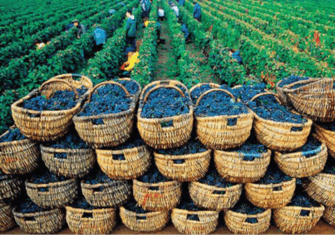Could 2025 deliver the same quality as the outstanding 1985,1995, 2005, 2015 vintages and how much will harvest yield matter?
How will supply of 2025 wine influence the market?
Early harvest insight on the 2025 vintage across key regions reveals yield is lower than the 5-year average and quality is looking good. How much will an evolving global wine market, with state intervention in production policy and supply dynamics, be a factor for this year’s wines?
Consumer habits are shifting with a proportion of younger drinkers increasingly turning away from alcohol generally, US tariffs on European wines, and the longest period of price suppression are bearing upon all elements of the supply chain.
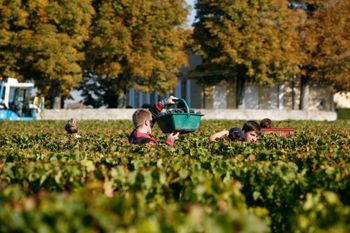 Combine this with a changing climate imposing significant challenges on producers managing quality and yield and the current conditions has led to state intervention to protect the industry on a macro scale.
Combine this with a changing climate imposing significant challenges on producers managing quality and yield and the current conditions has led to state intervention to protect the industry on a macro scale.
This backdrop will influence production decisions for the 2025 vintage as France, Italy, California and Spain all take steps to manage productivity to protect price. As it happens 2025 is, for some regions, similar in productivity to 2024, the smallest vintage since 1991.
Bordeaux 2025 Harvest Insight
Across France this year’s harvest is predicted to yield 13% less than the five-year average. August heatwaves and drought in Bordeaux sped up ripening and shrivelled grapes in hard-pressed vineyards, resulting in one of the earliest harvests on record. The Gironde yield is expected to be 15% below the five-year average.
Bordeaux productivity, as with other vineyard areas in France, has also been impacted by the removal of vines, in the ‘grubbing up’ campaign supported by the French Government. Over the last two years vineyard area in Bordeaux has reduced from 103,000 hectares in 2023 to 85,000 in 2025.
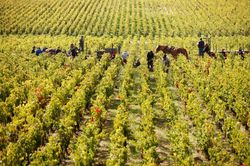 However, for the estates producing the region’s renowned investment-grade wines, supply management by the removal of vines is rare, if not non-existent. So, it comes down to how the vineyard teams respond to a changing climate.
However, for the estates producing the region’s renowned investment-grade wines, supply management by the removal of vines is rare, if not non-existent. So, it comes down to how the vineyard teams respond to a changing climate.
Notably, Chateau Lafleur hit the wine press headlines recently with their abdication from the AOC system to gain the freedom to put in place practices that will provide more options to respond to rising temperatures in Bordeaux.
Burgundy 2025 Harvest Insight
2025 was a more straightforward year in Burgundy's vineyards than the complicated 2024, which had more extreme weather. A warmer spring this year and relatively benign summer led to one of the earliest harvests in Burgundy in decades with pickers in the vines from around the 18th August for the whites.
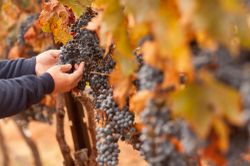 Heatwaves in June and August accelerated ripening and boosted the development of excellent maturity, but did have some impact, lowering yield as some grapes shrivelled in the sun.
Heatwaves in June and August accelerated ripening and boosted the development of excellent maturity, but did have some impact, lowering yield as some grapes shrivelled in the sun.
Burgundy is renowned for its highly prized grand crus, of which Domaine de la Romanéée Conti is recognised as the region’s super-star, producing the most valuable wines in the world, but also for their rarity as they are produced in very low numbers each year.
A reduced supply in these wines in a vintage which is looking to be of good quality is very likely to have a positive influence on price.
Champagne 2025 Harvest Insight
Champagne has the same influencing factors on productivity as Bordeaux, but the added detail of yield limits set annually by the Comité Champagne. In 2025 these were set at their lowest level since the Covid crisis at 9,000kg per hectare, which equates to around 255 million bottles for the region.
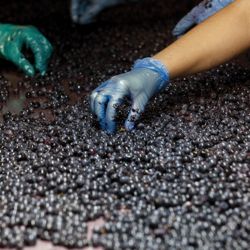 The 2025 harvest started on the earliest possible first pick date, this is also set by the Comité Champagne, on the 20st August, as unusually hot weather hit the region. Natural yields, before productivity management, are expected to be 10,000 to 11,000 kg / ha due to excellent growing conditions according to some leading growers.
The 2025 harvest started on the earliest possible first pick date, this is also set by the Comité Champagne, on the 20st August, as unusually hot weather hit the region. Natural yields, before productivity management, are expected to be 10,000 to 11,000 kg / ha due to excellent growing conditions according to some leading growers.
Champagne Roederer’s Chef du Cave, John-Baptiste Lécaillon, dubbed 2025 as the ‘F1 harvest’ due to the speed it was undertaken. They increased the vineyard teams to get the fruit into the winery within a concentrated window to optimise ripening and avoid higher alcohol levels.
In quality terms, some Champagne growers are viewing 2025 as potentially the best vintage in 30 years.
Tuscany 2025 Harvest Insight
Overall, Italy forecasts the 2025 harvest yield to be 8% higher than 2024 and back to average levels following the smaller 2023 and 2024 vintages. This level will make Italy the world’s leading producer on overall volume, followed by France and then Spain. But Italy has also taken steps on a macro level to manage supply.
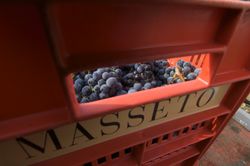 Italy’s wine industry is challenged by oversupply. If the forecast 47.4million hectolitres is achieved, this will add to the 37million currently in cellars. Yield management is key with a strong mandate against over-production to protect prices and balance sheets.
Italy’s wine industry is challenged by oversupply. If the forecast 47.4million hectolitres is achieved, this will add to the 37million currently in cellars. Yield management is key with a strong mandate against over-production to protect prices and balance sheets.
The 2025 Italy forecast is a 10 – 15% reduction on 2024 volume. Total Tuscany production is expected to be about 2.4 million hectolitres, down from 2.7million in 2024. Organic wine production is forecast to increase 10% year-on-year to 13 – 15% of the region’s total.
Piedmont 2025 Harvest Insight
Like other regions overall surplus wine stocks have led to controls over yield. Trade collapse in low value drinking wine has resulted in a region wide review and restriction for some. High value and low supply Piedmont investment wines are protected from this restriction and are viewed as Italy's comparative wines to Burgundy as their greater rarity supports stronger prices.
Napa 2025 Harvest Insight
A key feature of the 2025 vintage in Napa has been the coolest summer since 1999 with the local marine fog present throughout. This creates excellent wine making conditions with unpressured ripening.
Early indicators suggest that volume may be up 10 – 15% on 2024 which reportedly had the smallest grape crush in 20 years according to the US Department of Agriculture.
California also has concerns with over- production and with the 2025 vintage there are rumours that some well-known wineries are trying to extract themselves from large portions of their grape supply contracts.
Inglenook’s Jonathan Tyer commented “We are still fine-tuning our estates, but it’s already clear that this will be our highest tons-per-acre since 2019.” Numbers are still to be confirmed as rainfall may yet influence yield.
Our view
Supply is key in wine economics, and the investment model is predicated on fine wine becoming rarer over time as it also improves with age.
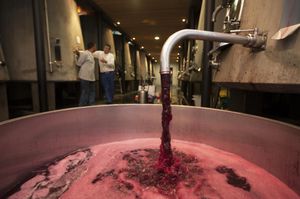 The supply in the secondary market of an investment wine will influence price performance and those smaller vintages, or smaller releases onto the market, for example at en primeur, will be an added factor in price performance.
The supply in the secondary market of an investment wine will influence price performance and those smaller vintages, or smaller releases onto the market, for example at en primeur, will be an added factor in price performance.
Where a vintage achieves an average higher quality score across a wine region as rated by the top critics, this normally adds a premium. If supply is short this will enhance returns further.
The earliest indicators suggest that 2025 is a good quality vintage in the regions investors focus on, but we will have to wait for the in-barrel critics scores next spring for certainty. What we will know soon, once the harvest is complete, is the supply factor.
For more information our Guide to Investing in Fine Wine and our latest Report for current market analysis. Our expert team can also provide more detail on 0203 384 2262.
